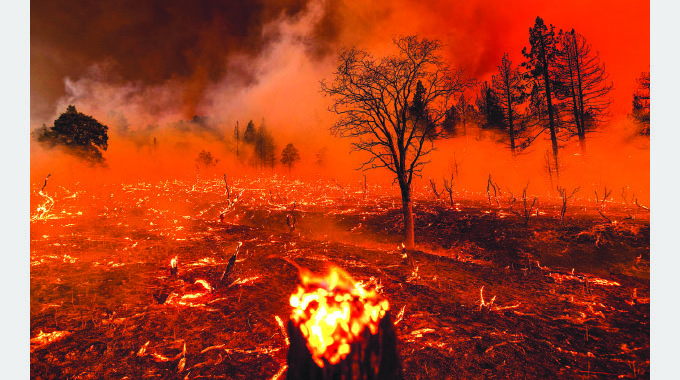Zimbabwe: Veld fires kill 18

Sifelani Tsiko Agric, Environment & Innovations Editor
A total of 18 people have so far been killed by veld fires that are sweeping through some parts of the country since the onset of the fire season on July 31, a senior Environmental Management Agency (EMA) official says.
EMA spokesperson Amkela Sidange told the Herald on Tuesday that the death toll had risen to 18 this season following the death of 10 people on Monday at a farm in Esigodini in the Umzingwane rural district of Matabeleland South province.
The victims got trapped in a mountainous area while fighting a raging veld fire at a farm, east of Bulawayo, the country’s second largest city.
“Eighteen lives have so far been lost in veld fire incidences to date, since the start of the fire season on July 31st. In 2010, the country recorded 25 deaths for the whole season. If no action to mitigate the fires is taken, this season might turn out to be the worst.
“The fire season has not ended and it’s possible that the deaths could surpass the 2010 figures if no action is taken on time to prevent veld fires.”
Veld fires have been raging in various parts of the country burning millions of acres of land, crops, property and people.
The news of the deaths in Umzingwane comes at the peak of fire season.
Above-average rains in the 2021 -2022 cropping season have increased the risk of veld fires in the country with the presence of a huge biomass that stoke the fires.
EMA has so far recorded a total of more than 774 fire incidences that burnt 163 820.05 ha of veld as at the first week of October 2022.
“Cumulatively, since the beginning of the fire restriction period a total of 5 386 incidences burning 1 244 227.34 Ha were recorded. The area burnt increased by 58.6 percent from 784 725.23 Ha that was burnt at the same period in 2021,” EMA said in a latest report.
“A total of 5 386 incidences have so far been recorded as compared to 3 410 incidences recorded in 2021 indicating a 57.9 percent increase.”
The agency said the average burnt area in 2021 during the same period was 230.12 hectares per incident while in 2022 average area burnt is 231.01 hectares.
Mashonaland West followed by Matabeleland North provinces have the highest total burnt areas while Manicaland and Masvingo have the least areas burnt for rural provinces.
EMA said veld fires are one of the drivers of land degradation that lead to deforestation and
desertification processes.
“Veld fires can be a real ecological disaster, regardless of whether it is caused by natural forces or human activity,” the agency said.
Runaway fires destroy 1 million hectares of land on average a year in Zimbabwe. EMA estimates that property worth US$300 000 is gutted down by fires annually.
The worst fires were recorded in 2012 where US$479 723 property was lost. Veld fires are negatively affecting the strategic sectors of the economy such as agriculture, tourism and communication.
This season alone, veld fires have destroyed 200ha of winter wheat crop worth thousands of dollars in major wheat growing belts.
Zimbabwe has seen several devastating fires that have threatened lives, property, the natural environment, crops, livestock and game across the country.
Veld fires have caused property damage, reduced soil fertility, destruction of vegetation, air and water pollution and destruction of wildlife.
Most veld fires are a result of human actions that emanate from the disposal of cigarettes, the burning of vegetation when preparing fields, the use of fire by hunters, smoking out bees and the making of fires by motorists along highways.
Trees, species of wildlife, farming land, livestock, human lives and livelihoods suffer under the severe threat posed by veld fires.
Scientists say climate change has made Zimbabwe and most other southern African countries warmer and drier over the last three decades and will continue to make weather more extreme and wildfires more frequent and destructive.







Comments